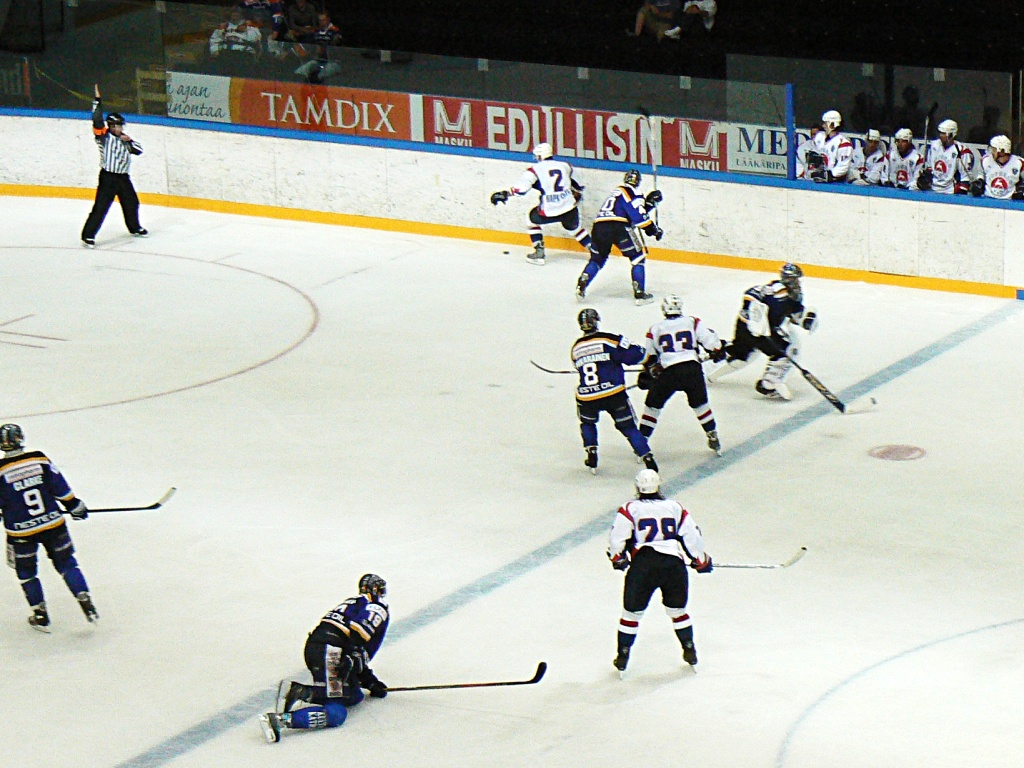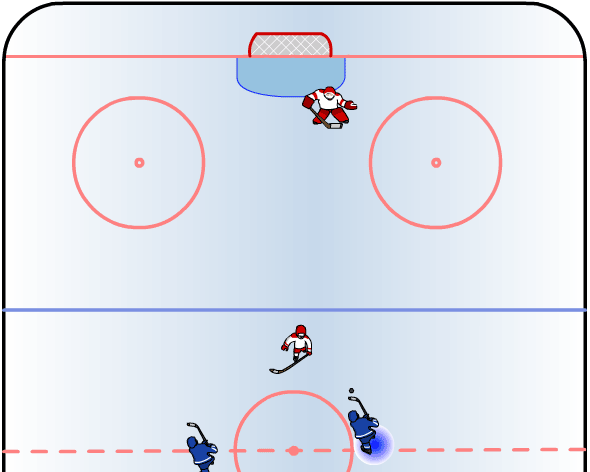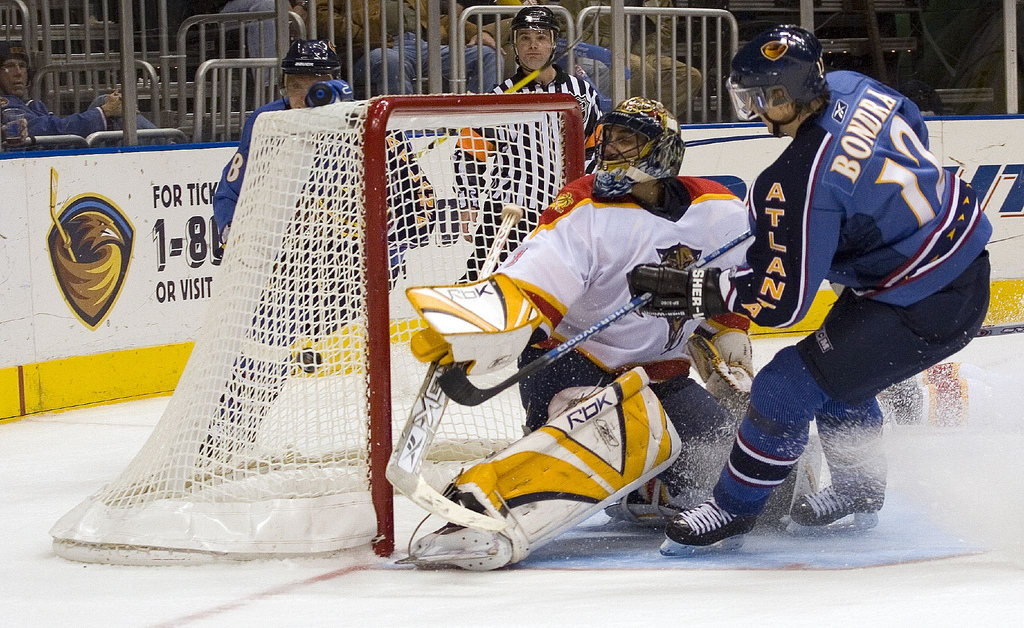|
Barry Gibbs
Barry Paul "Gibby" Gibbs (born September 28, 1948) is a Canadian former professional ice hockey defenceman. He was selected first overall in the 1966 NHL Amateur Draft. Playing career During his NHL career, Gibbs played for the Boston Bruins, Minnesota North Stars, Atlanta Flames, St. Louis Blues and Los Angeles Kings. He retired in 1981. Barry came to Minnesota from Boston in the deal that brought Tom Williams to the North Stars. He played junior hockey at Estevan, Sask. and in the Boston organization at Oklahoma City of the CHL. He comes from a family of seven, four boys and three girls. His nephew, Darren Gibbs, has worked as an on-ice official in the National Hockey League since 1997. On the final weekend of the 1969-70 season, Gibbs scored the only goal in Minnesota's 1-0 victory over the Philadelphia Flyers on April 4. The goal came on an 80-foot shot that somehow eluded Flyers' goalie Bernie Parent. The loss eliminated the Flyers from playoff contention. He was traded ... [...More Info...] [...Related Items...] OR: [Wikipedia] [Google] [Baidu] |
Defenceman
Defence or defense (in American English) in ice hockey is a player position that is primarily responsible for preventing the opposing team from scoring. They are often referred to as defencemen, D, D-men or blueliners (the latter a reference to the blue line in ice hockey which represents the boundary of the offensive zone; defencemen generally position themselves along the line to keep the puck in the zone). They were once called cover-point. In regular play, two defencemen complement three forwards and a goaltender on the ice. Exceptions include overtime during the regular season and when a team is shorthanded (i.e. has been assessed a penalty), in which two defencemen are typically joined by only two forwards and a goaltender. In National Hockey League regular season play in overtime, effective with the 2015-16 season, teams (usually) have only three position players and a goaltender on the ice, and may use either two forwards and one defenceman, orrarelytwo defenceme ... [...More Info...] [...Related Items...] OR: [Wikipedia] [Google] [Baidu] |
Saskatchewan Junior Hockey League
The Saskatchewan Junior Hockey League is a Junior 'A' ice hockey league operating in the Canadian province of Saskatchewan and one of nine member leagues of the Canadian Junior Hockey League. Open to North American-born players 20 years of age or younger, the SJHL's 12 teams play in three divisions: the Olympic Buildings, Sherwood and Viterra Divisions. A major attraction in Saskatchewan, the SJHL draws 400,000 fans each season. The winner of the SJHL playoffs is crowned the provincial Junior A champion and continues on to play in the ANAVET Cup against the Manitoba provincial champion (winner of the Manitoba Junior Hockey League playoffs) for the right to represent the Western region at the Centennial Cup, the national Junior A championship. History The current version of the SJHL was preceded by a separate league with the same name that operated from 1948 to 1966. The modern SJHL was formed in July 1968 as a result of the Western Canada Hockey League (WCHL) spli ... [...More Info...] [...Related Items...] OR: [Wikipedia] [Google] [Baidu] |
Estevan Bruins
Estevan is the eighth-largest city in Saskatchewan, Canada. It is approximately north of the Canada–United States border. The Souris River runs by the city. This city is surrounded by the Rural Municipality of Estevan No. 5. History The first settlers in what was to become Estevan arrived in 1892, along with the expansion of the Canadian Pacific Railway. It was incorporated as a village in 1899, and later became a town in 1906. On March 1, 1957, Estevan acquired the status of a city, which, in Saskatchewan terms, is any community of 5,000 or more. The name origin is attributed to George Stephen's registered telegraphic address, ''Estevan''. George Stephen was the first President of the Canadian Pacific Railway from 1881 to 1888. World War I military unit On December 22, 1915, the 152nd (Weyburn-Estevan) Battalion, CEF was authorised and recruited men from the area before departing to Great Britain on October 3, 1916. 1931 riot Estevan was the site of the notorious Es ... [...More Info...] [...Related Items...] OR: [Wikipedia] [Google] [Baidu] |
Penalty (ice Hockey)
A penalty in ice hockey is a punishment for an infringement of the rules. Most penalties are enforced by sending the offending player to a penalty box for a set number of minutes. During the penalty the player may not participate in play. Penalties are called and enforced by the referee, or in some cases, the linesman. The offending team may not replace the player on the ice (although there are some exceptions, such as fighting), leaving them short-handed as opposed to full strength. When the opposing team is said to be on a '' power play'', they will have one more player on the ice than the short-handed team. The short-handed team is said to be "on the penalty kill" until the penalty expires and the penalized player returns to play. While standards vary somewhat between leagues, most leagues recognize several common varieties of penalties, as well as common infractions. The statistic used to track penalties is called "penalty minutes" and abbreviated to "PIM" (spoken as singl ... [...More Info...] [...Related Items...] OR: [Wikipedia] [Google] [Baidu] |
Point (ice Hockey)
In ice hockey, point has three contemporary meanings. Personal stat A point is awarded to a player for each goal scored or assist earned. The total number of goals plus assists equals total points. The Art Ross Trophy is awarded to the National Hockey League (NHL) player who leads the league in scoring points at the end of the regular season. Team stat Points are also awarded to assess standings (or rankings). Historically, teams were awarded two points for each win, one point for each tie and no points for a loss. Such a ranking system, implemented primarily to ensure a tie counted as a "half-win" for each team in the standings, is generally regarded as British and/or European in origin and as such adopted by the National Hockey League which was founded in Canada where leagues generally used ranking systems of British origin. Awarding points in the standings contrasts with traditional American ranking systems favored in sports originating within the United States where today th ... [...More Info...] [...Related Items...] OR: [Wikipedia] [Google] [Baidu] |
Assist (ice Hockey)
In ice hockey, an assist is attributed to up to two players of the scoring team who shot, passed or deflected the puck towards the scoring teammate, or touched it in any other way which enabled the goal, meaning that they were "assisting" in the goal. There can be a maximum of two assists per goal. The assists will be awarded in the order of play, with the last player to pass the puck to the goal scorer getting the primary assist and the player who passed it to the primary assister getting the secondary assist. Players who gain an assist will get one point added to their player statistics. Despite the use of the terms "primary assist" and "secondary assist", neither is worth more than the other, and neither is worth more or less than a goal. Assists and goals are added together on a player's scoresheet to display that player's total points. Special cases If a player scores off a rebound given up by a goaltender, assists are still awarded, as long as there is no re-possession by ... [...More Info...] [...Related Items...] OR: [Wikipedia] [Google] [Baidu] |
Goal (ice Hockey)
In ice hockey, a goal is scored when the puck entirely crosses the goal line between the two goal posts and below the goal crossbar. A goal awards one point to the team attacking the goal scored upon, regardless of which team the player who actually deflected the puck into the goal belongs to (see also own goal). Typically, a player on the team attempting to score shoots the puck with their stick towards the goal net opening, and a player on the opposing team called a goaltender tries to block the shot to prevent a goal from being scored against their team. The term goal may also refer to the structure in which goals are scored. The ice hockey goal is rectangular in shape; the front frame of the goal is made of steel tube painted red (blue in the ECHL because of a sponsorship deal with GEICO) and consists of two vertical goalposts and a horizontal crossbar. A net is attached to the back of the frame to catch pucks that enter the goal and also to prevent pucks from entering it ... [...More Info...] [...Related Items...] OR: [Wikipedia] [Google] [Baidu] |
Season (sports)
In an organized sports league, a typical season is the portion of one year in which regulated games of the sport are in session: for example, in Major League Baseball the season lasts approximately from the last week of March to the last week of September. In other team sports, like association football or basketball, it is generally from August or September to May although in some countries - such as Northern Europe or East Asia - the season starts in the spring and finishes in autumn, mainly due to weather conditions encountered during the winter. A year can often be broken up into several distinct sections (sometimes themselves called seasons). These are: a preseason, a series of exhibition games played for training purposes; a regular season, the main period of the league's competition; the postseason, a playoff tournament played against the league's top teams to determine the league's champion; and the offseason, the time when there is no official competition. Preseason ... [...More Info...] [...Related Items...] OR: [Wikipedia] [Google] [Baidu] |
Playoffs
The playoffs, play-offs, postseason or finals of a sports league are a competition played after the regular season by the top competitors to determine the league champion or a similar accolade. Depending on the league, the playoffs may be either a single game, a series of games, or a tournament, and may use a single-elimination system or one of several other different playoff formats. Playoff, in regard to international fixtures, is to qualify or progress to the next round of a competition or tournament. In team sports in the U.S. and Canada, the vast distances and consequent burdens on cross-country travel have led to regional divisions of teams. Generally, during the regular season, teams play more games in their division than outside it, but the league's best teams might not play against each other in the regular season. Therefore, in the postseason a playoff series is organized. Any group-winning team is eligible to participate, and as playoffs became more popular they ... [...More Info...] [...Related Items...] OR: [Wikipedia] [Google] [Baidu] |
Regular Season
In an organized sports league, a typical season is the portion of one year in which regulated games of the sport Sport pertains to any form of competitive physical activity or game that aims to use, maintain, or improve physical ability and skills while providing enjoyment to participants and, in some cases, entertainment to spectators. Sports can, ... are in session: for example, in Major League Baseball the season lasts approximately from the last week of March to the last week of September. In other team sports, like association football or basketball, it is generally from August or September to May although in some countries - such as Northern Europe or East Asia - the season starts in the spring and finishes in autumn, mainly due to weather conditions encountered during the winter. A year can often be broken up into several distinct sections (sometimes themselves called seasons). These are: a preseason, a series of exhibition games played for training purposes; a r ... [...More Info...] [...Related Items...] OR: [Wikipedia] [Google] [Baidu] |
1979 NHL Entry Draft
The 1979 NHL Entry Draft was the 17th NHL Entry Draft. It took place on August 9, 1979, at the Queen Elizabeth Hotel in Montreal, Quebec. The National Hockey League (NHL) teams selected 126 players eligible for entry into professional ranks, in the reverse order of the 1978–79 NHL season and playoff standings. The draft was the first to be conducted after the NHL-WHA merger. As part of the terms of the merger, the four former WHA teams had joined the NHL on the condition that they be placed at the bottom of the draft order, as opposed to the top of the order as is usually the case for expansion teams. In addition, the minimum draft age was lowered from 20 to 19 with the addition of any underage players who had already played in the WHA. The NHL had been considering lowering the draft age for some time, and timed the decision to lower the draft age at least in part to coincide with the merger. The lowering of the draft age caused two years' worth of draft picks to go in the sam ... [...More Info...] [...Related Items...] OR: [Wikipedia] [Google] [Baidu] |

.jpg)



